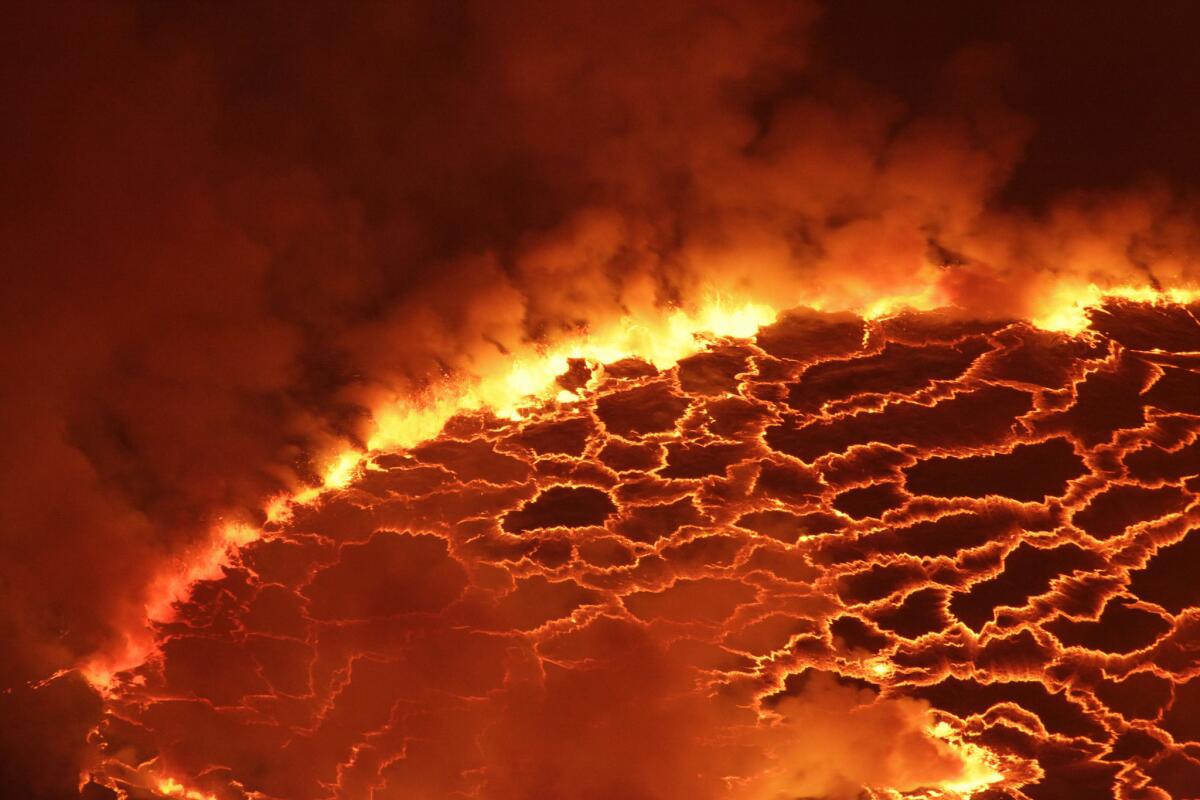Earth may ‘remember’ more of its infancy than previously thought

Ancient gases trapped deep within the Earth’s mantle may reveal clues about our planet’s earliest days, according to a new study.
For the past decade scientists believed our planet’s memory was reset 4.5 billion years ago when an object the size of Mars slammed into the Earth, releasing enough energy to cause most of the Earth to turn into a liquid magma ocean.
Any clues to the planet’s earlier past, scientists thought, likely got melted away in this last, great impact, which also created our moon.
However, Sujoy Mukhopadhyay, a geochemist at Harvard University has found evidence that the impact may not have affected the whole planet in the same way.
“The simulations we are doing now indicate that some regions got melted and vaporized, while the opposite side of the planet did not melt at all,” he said Monday after presenting his research at the Goldschmidt conference in Sacramento.
If the entire Earth did not melt, that means there may be a few hidden vestiges of our planet from a time before the moon. And they may help scientists learn more about the Earth’s infancy and planetary formation in general.
To support this theory, Mukhopadhyay and his colleagues compared gases trapped in volcanic rock from deep in the Earth’s mantle to gases that came from a more shallow part of the mantle. They found that the Helium-3 to Neon-22 ratio in the shallow mantle is significantly higher than in the deep mantle.
Neither Helium-3 or Neon-22 are affected by radioactive decay, and they cannot be changed by plate tectonics either, said Mukhopadhyay. They can, however, be changed if the Earth was liquid.
If the entire Earth became liquid after the last major impact 4.5 billion years ago, there would not be a difference in the isotope ratio in the two parts of the mantle. Therefore, the researchers conclude, only part of the mantle melted all the way at that time.
This theory is further buoyed by examination of the 129-xenon to 130-xenon ratio, which put a time stamp on the formation age of the oldest part of the Earth’s mantle to within the first 100 million years of the Earth’s history.
The rocks that the researchers examined came from a few different hot spots around the world. The deep mantle gases were trapped in rocks from Hawaii, Iceland and Samoa. The more shallow mantle gases were in rocks found around mid-ocean ridges.
Mukhopadhyay said the next step is to make more measurements of rocks from different hot spots around the world, and then use that information to build more realistic models of giant impacts.
“What this means is the Earth has memories that go back further than we thought,” he said.
For more amazing science news, follow me @DeborahNetburn





